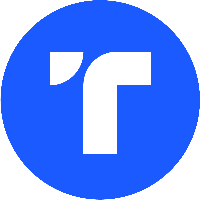How to Make NFTs for Free

In the ever-evolving world of blockchain technologies, NFTs, or non-fungible tokens, are perhaps the most exciting. NFTs have revolutionized the art, music, and gaming industries, among others, enabling artists to tokenize their work, establish provable ownership, and potentially earn sizeable profits from their creativity. But while NFTs may seem complex or expensive, the good news is that you can create NFTs for free. Yes, absolutely free, and we're going to show you how.
Understanding NFTs: A Brief Overview
Before diving into the creation process, it’s important to understand what NFTs are. Unlike cryptocurrencies such as Bitcoin or Ethereum, which are fungible—meaning one can be exchanged for another—NFTs are unique digital assets, each representing ownership of a specific item, often digital art, music, videos, or even virtual real estate.
NFTs operate predominantly on the Ethereum blockchain, utilizing its smart contract functionality to manage ownership and transferability. This uniqueness not only supports individual ownership but also facilitates direct transactions between creators and buyers, bypassing costly intermediaries.
The Growing Appeal of NFTs
The allure of NFTs lies in their ability to provide artists with new opportunities to monetize their work. From Beeple's $69 million digital artwork sale to musicians releasing albums in NFT format, the digital marketplace has seen an explosion of interest. For artists and creators, the potential of NFTs is immense—they can earn royalties on secondary sales, expand their audience reach globally, and control their work's distribution.
Creating NFTs Without Cost: The Methods
1. Choosing the Right Blockchain
While Ethereum is the most popular platform for NFTs, it often incurs high gas fees, which are costs associated with processing transactions or executing smart contracts. Creators looking to make NFTs for free might consider alternative blockchains like Polygon (formerly Matic), Binance Smart Chain, or Tezos, known for lower or even zero gas fees.
2. Selecting a Free NFT Marketplace
Several marketplaces have emerged to cater specifically to NFT creators and buyers. OpenSea, Rarible, and Mintable are among the leading platforms. To mint NFTs for free, look for platforms that support lazy minting.
Lazy minting allows creators to defer the minting cost until a buyer purchases the NFT. This means the NFT itself isn't minted onto the blockchain until a transaction occurs, meaning creators don't pay upfront gas fees.
3. Setting Up a Digital Wallet
You'll need a digital wallet capable of supporting NFTs, such as MetaMask, Trust Wallet, or Coinbase Wallet. Ensure your wallet is set up to connect with chosen marketplaces and blockchains.
4. Creating Your Digital Asset
Artists should ensure their work is of the highest quality, representing their talent and creativity. Once ready, digital files (art, music, etc.) can be uploaded to the chosen platform. Accompanying metadata—like titles, descriptions, properties, and external metadata URLs—provides buyers essential information about the NFT.
5. Uploading and Minting
Using platform instructions, upload your digital file. Enable lazy minting features if available. Though you may encounter some listing fees on certain platforms, many others ensure the process remains entirely free.
6. Promoting Your NFT
With your NFT minted and listed, promotion is key. Leverage social media networks, NFT communities, and partner with other artists to showcase your work.
The Pros and Cons of Free NFT Creation
Advantages:
- Cost Efficiency: Removes economic barriers for new artists.
- Accessibility: Simplifies tech for non-tech-savvy creators.
- Flexibility: Allows experimentation without financial risk.
Disadvantages:
- Blockchain Limitations: Free platforms can have limited features compared to premium ones.
- Market Competition: Intense competition as low barriers increase entries.
Future Prospects for Free NFT Creation
As blockchain technology continues to evolve with greater scalability and reduced costs, the barriers to creating NFTs are likely to diminish further. The development of more user-friendly tools and platforms can democratize access even more, inviting a plethora of creators to enter the NFT space.
Furthermore, as more industries explore the potential of NFTs beyond just art, the ecosystem's expansion could invite myriad new applications, reshaping how digital ownership and value are perceived.
Ultimately, the opportunity to create and share NFTs for free empowers individuals to explore this dynamic new frontier without upfront investment, expanding the possibilities for global art and creation.
Ready to mint your first NFT? The tools are at your disposal, so delve into the world of limitless digital creativity—for free!
Related articles
Latest articles
See more























